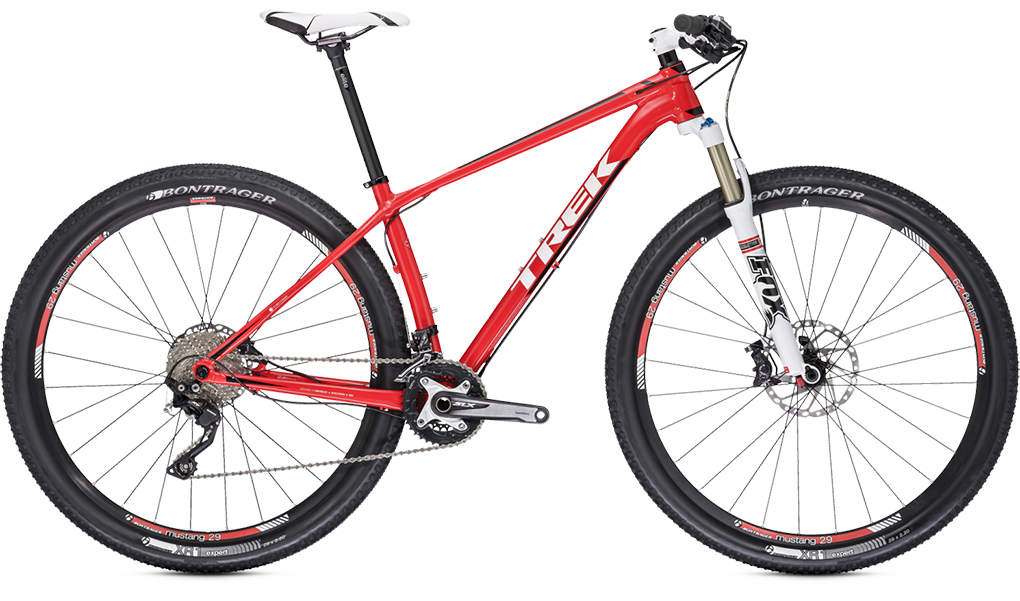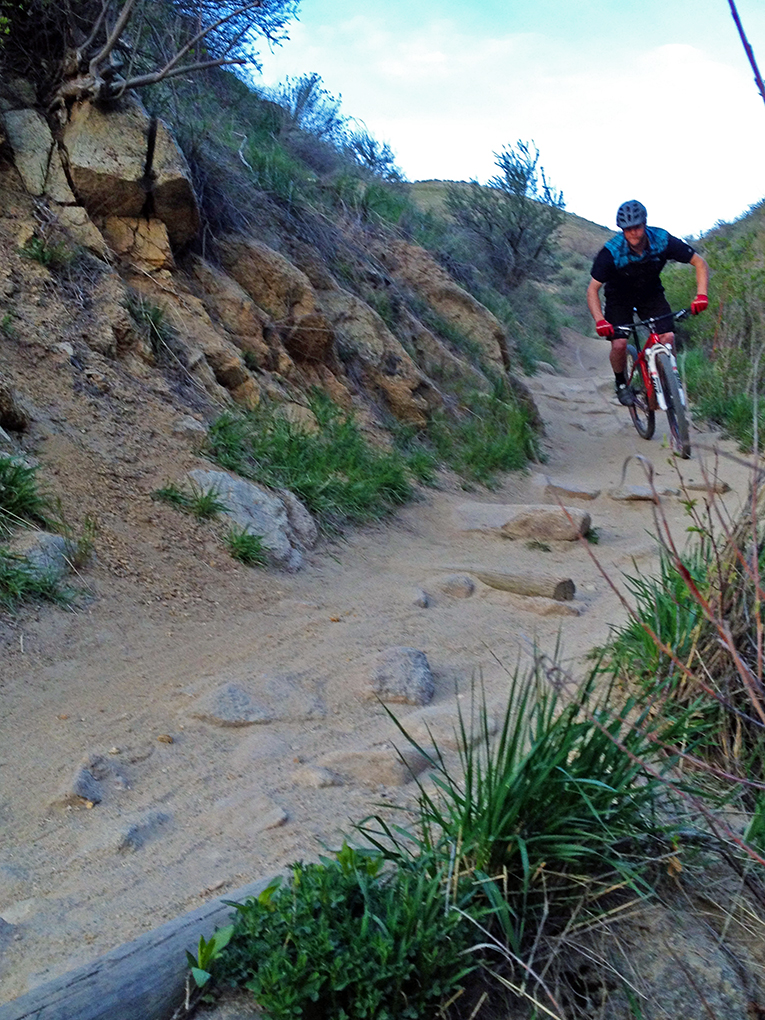
Update: 2014 Trek Superfly 8
Rider: 5’10” 165 lbs, does not shave legs.
Intended Use: XC, light racing, general purpose hardtail
Sizes Tested: 17.5” (See Sizing section)
Geometry: Check it out here
Weight: 25.6 lbs. (See build below for specifics)
Wheels: 29”
MSRP: $2359.99
Build:
- Trek Alpha Platinum Aluminum Frame with G2 Geometry
- Fox Evolution 32 CTD Fork w/ 15mm thru axle, tapered steer tube
- Bontrager 29” Mustang hoops – 15mm front, 142x12mm rear
- Shimano SLX 10spd shifters
- Shimano XT Shadow Plus rear derailleur
- Shimano SLX brakes
- Shimano SLX crank, 38/24 tooth
- Shimano Deore Cassette, 11-36 tooth, 10spd
Days Tested: ~25
Test Location: Boise, Idaho
In my First Look of the Superfly 8, I mentioned a few emerging trends that are improving hardtail mountain bikes. 12x142mm thru-axles are becoming more common, giving bikes a laterally rigid rear end for better cornering and tracking in the rough. Hydroformed tubing allows for increased compliance where needed, and strength where necessary. Press-fit bottom brackets and integrated headsets keep bearings inside the frame away from debris and grime, further stiffening critical areas for better handling and power transfer.
These design elements are all incorporated into the Superfly 8 (S8), and after a few months of tweaking our review bike, swapping out handlebars and putting more time in the saddle, I’ve concluded that it’s a good 29” hardtail mountain bike for a particular type of rider.
For this Update, I’ll get into the weeds on a few components and the bike’s build, but will be focusing mostly on the ride characteristics of the S8.
Sizing
As I mentioned in my First Look, the S8 in a 17.5″ frame feels a tad tight in the cockpit. Overall, the ride experience wasn’t affected too negatively, but I think an 18.5″ frame would have been a better fit for me. The 17.5″ frame size felt a little small particularly when standing on climbs given how close my knees were coming to the handlebars. The seatpost also had to be maxed out to get proper leg extension, and I needed to slide the saddle back in the rails a bit to get the arm length right.
Climbing
The Superfly is designed to be an entry-level XC race machine, and XC races tend to have lots of climbing, so the Superfly should perform well in this department. It does. It’s excellent, in fact.

Sprints and standing slogs are where I felt the most bang in efficiency. I typically stand on shorter, punchy climbs and sit back down when things flatten out. But on the S8, I found myself standing more than sitting, almost riding as if it were a singlespeed.
On long, drawn-out hauls up fire roads, or when contouring across a hillside, the Superfly is content spinning big gears to get you there faster. The SLX 2x transmission has a granny gear for the ultra-steep grinds, which I don’t think I ever used, but it’s good to know it’s there if the going gets ridiculously steep.
The most impressive thing for me about the S8’s climbing ability is how the bike climbs equally well on fire roads as it does on ledge-strewn technical terrain. Boise locals know ‘Hulls Rock’—a seemingly un-ridable chunk of sandstone that’s rejected me on a few bikes before—and the S8 danced up and over it with ease.
Comparing the Superfly to my Canfield Yelli Screamy, the Superfly beats the piss out of the Yelli when it comes to climbing. There is far more pep in the S8’s step; it likes a fast cadence and rewards the rider for keeping pace. The Yelli is more of a leisurely “I’ll get there when I get there” kind of climber. For longer (3-4 hour) rides with significant climbing, I found myself taking the Superfly instead of the Yelli because I knew I wouldn’t have to work as hard getting up the hill.
Coming down was another story…
Descending
In my First Look, I talked about how the S8 was difficult to corner at speed, and that I intended on swapping tires to see if that made a difference. I wasn’t able to swap tires (the 2.4” Schwalbe’s I have wouldn’t fit the S8’s stays) but I did experiment with wider bars, which did help leverage the bike better in corners.

Personally, I think wide bars are more of a necessity rather than a novelty on ‘niners. By adding an extra 3” in width over the stock Bontrager bars with some RaceFace Atlases, it was noticeably easier to force the S8 sideways when I needed to. That added torque allows for more control over a bike like the S8 that sits higher off the ground and has a higher center of gravity than smaller wheeled bikes. (Then again, maybe I’m just used to wide bars.)

Hi I am roughly the same height and weight as you. You mentioned that the superfly size was a 17.5. was this the actual size or virtual size, thanks Martin.
Hi
My height is 5.6″. I want to buy a 29er bike. Which frame size is perfect for me. Plz suggest me.
Thanks
Munna…
I have the small size on this same bike.. i’m 5’8 you should be more than fine.. It is a little short for me.
rgds
kiks